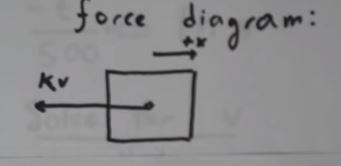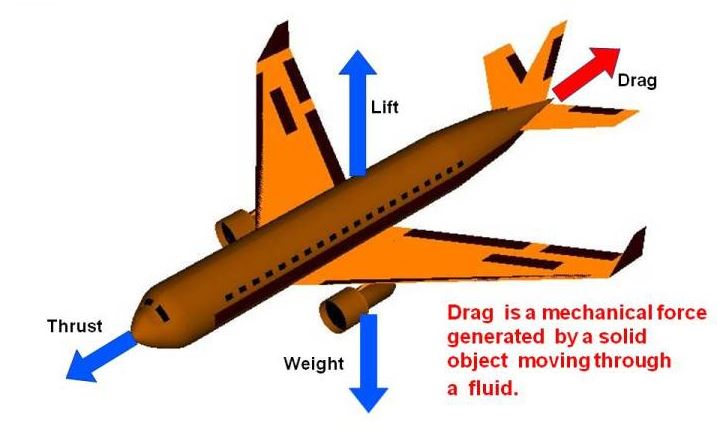Eulerian Angles
Introduction
When you have a body that rotates in plane motion (2-D), it is easy to find the orientation of the body if you have the angular velocity as a function of time. You can integrate this value to find the orientation of the body at any position. In the image shown, we can find out the position of an object at any place in the xy plane.
Unfortunately, you cannot integrate an angular velocity vector with 3-D components to get the orientation of the body in three dimensional space. This requires the concept of Eulerian Angles, which are used in determining a body's orientation in space using angular velocity in the x, y, and z axes.
Eulerian Angles
Essentially, to describe the orientation of a body in 3 dimensions we must describe its rotation about three specific axes. In our example shown in the image, we will first rotate our body's reference frame about the k axis (black to blue), then the j axes (blue to green), and finally the k axis again (green to red).

Note, we moved from the black i, j, k axes to the blue i, j, k axes, where the k axis remained the same for both black and blue frames. Then we moved from the blue i, j, k axes to the green i, j, k axes, where the j axis remained the same for both the blue and green frames. Finally, we moved from the green i, j, k axes to the red i, j, k axes, where the k axis remained the same for both the green and the red frames.
Angular Velocity Using the addition theorem (can be further studied at Coursera) we find that the body A with respect to the inertial frame I is defined to be w = θ' k (black/blue axis) + φ' j (blue/green axis) + ψ' k (green/red axis).
WHY AIR RESISTANCE DEPENDS ON DRAG COEFFICIENT Air resistance is affected by what is called the drag coefficient which is essentially the shape of the object. If the object has a certain shape such as a pointy edge rather than blunt edge then the air resistance is greatly reduced. For example a spherical object has a drag coefficient of .5 and irregularly shaped objects can even reach 2.
WHY AIR RESISTANCE DEPENDS ON CROSS-SECTIONAL AREA It can be seen from practice that the bigger the cross-sectional area of the object the larger the effect that air resistance has on the object. This due to the fact that air resistance is the result of the collision of an objects surface with the air molecules. This means that the bigger the surface-area the more collisions with air molecules the object will experience and the faster it'll reach terminal velocity. For example a person going sky diving will fall much slower with an open parachute (more surface area, air resistance has a bigger impact) than with a closed parachute (less surface area, air resistance has a smaller impact).
WHY AIR RESISTANCE DEPENDS ON SPEED Air resistance is affected by speed because it increases as velocity increases. This can be seen because there is always gravitational force acting on the object downward, but as the speed increases the air resistance increase making the net downward force much much smaller until it becomes 0. This means that at some point the object reaches terminal speed because there is no longer a net force acting upon it.
Example of a Gyroscope
We can use the procedure outlined above to describe the orientation of a gyroscope at any time given the components of its angular velocity. An example of a rotation gyroscope is shown in the image.

Simple
You drop a single coffee filter of mass 1.1 grams from a very tall building, and it takes 46 seconds to reach the ground. In a small fraction of that time the coffee filter reached terminal speed.
1. What is the upward force of air resistance while the coffee filter was falling at terminal speed?
At terminal velocity Fair=mg 1.1/1000 = .0011kg .0011kg* 9.8 m/s^2 = .01078N
2. If you drop a stack of 6 coffee filters what is the upward force of air resistance at terminal speed?
1.1/1000= .0011kg*6= .0066kg .0066kg*9.8m/s^2 = .06468kg
Middling/Difficult
Johnathan is driving a 1000kg car down a road at 30m/s when his friend cuts his breaks again and there is no friction between the wheels and road. He can only rely on air resistance to slow his car down since the emergency brake can only be pulled at 2 m/s. If this force is equal to -kv where v is velocity through air and k is 2, when can John pull the emergency break?
2. Sum of Forces = ma
-Kv= 1000a -Kv = 1000 (dv/dt) -2v= 1000 (dv/dt) -dt/500 = (dv/v)
3. Integrate
(-t/500)+c = ln(v)
4. Solve for v
e^((-t/500) *c = v
v(0) = c1*e^(0) = c1
v(0) = 30
v = 30 *e^(-t/500)
v(t) = 30*e ^ (-t/500)
v(2) = 30*e ^ (-t/500)
ln(1/15)= -t/500
t - 500ln15
Connectedness
- How is this topic connected to something that you are interested in?
This topic is connected to airplanes which are a fascinating invention. It is hard to imagine that humans have been able to find a way to get a massive object to fly into the sky. When one really delves into all the physics that getting a plane into the air requires it really is fasccinating.
- How is it connected to your major?
This is not directly connected to my major. Although the chemical engineering field is vast I do not think there is yet, a connection with the concept of drag force.
- Is there an interesting industrial application?
Air resistance is part of a much bigger application of physics known as aerodynamics which is essentially the study of how fluids and gases interact with objects in motion. The most common example of aerodynamics is airplanes. Engineers and scientist have to use the principles of aerodynamics (air resistance/drag force included) in order to determine the shape, engines, wings of a plane. It gets much more complicated when forces such a light, weight, thrust and drag come together.
See also
Are there related topics or categories in this wiki resource for the curious reader to explore? How does this topic fit into that context?
Further reading
Books, Articles or other print media on this topic
External links
Internet resources on this topic
References
Dr. Wayne Whiteman DEFINE THE PROPERTIES OF ANGULAR VELOCITY FOR 3D MOTION Nave, R. "Terminal Velocity." Hyper Physics. N.p., n.d. Web. 7 Dec. 2015. <http://hyperphysics.phy-astr.gsu.edu/hbase/airfri2.html#c3>.
MATHEMATICAL COMPONENT, EXAMPLES (EASY AND MIDDLING) Chabay, Ruth W., and Bruce A. Sherwood. Matter and Interactions. Hoboken, NJ: Wiley, 2011. Print.

